Philips Fidelio T1
30-second review
What’s the first thing you think when you encounter a pair of Philips Fidelio T1? We’d be surprised if it’s anything other than “goodness, they’re quite large”.
Get beyond the dimensions, if you can, and the T1 prove to be a very worthwhile and diverting pair of wireless earbuds. They sound good - hefty and punchy but in no way musclebound - and thanks to impressive battery life, they sound good for ages between charges. They’re easy to control - as well as in a number of ways. They’re made from tactile and high-end materials. These true wireless earbuds are comfortable, despite how bulky they look.
Still, there’s no two ways about it, which is why we keep coming back to it: these ‘buds are big. Do you want true wireless in-ear headphones that mostly live outside your ear?
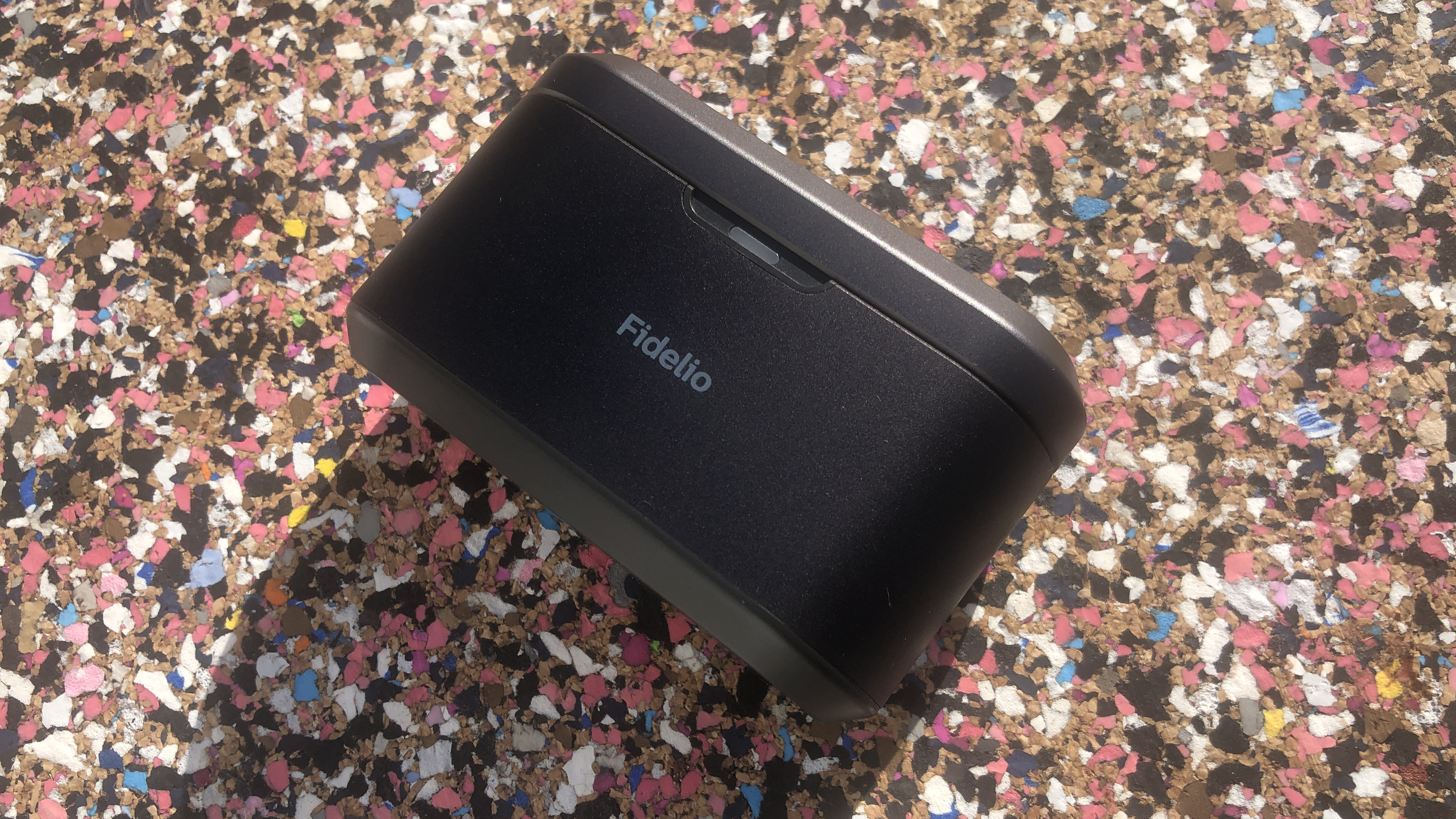
Philips Fidelio T1 price and release date
- Available now
- $299 / £249 / AU$449
The Philips Fidelio T1 true wireless in-ear headphones are on sale now, for $299 / £249 / AU$449.
This amount of money buys you some extremely well-regarded alternatives from some extremely well-regarded brands. The Sony WF-1000XM4, for example, are regarded by pretty much everyone (not least us) as the most accomplished true wireless in-ears currently available - and these days, they’re more affordable than these Philips. But numerous big-hitters - Beats, Bose, Bowers & Wilkins, Sennheiser, and so on - will part you from this sort of money for a fully specified and well-received product of their own. This is a tough market for Philips to attempt to crash.
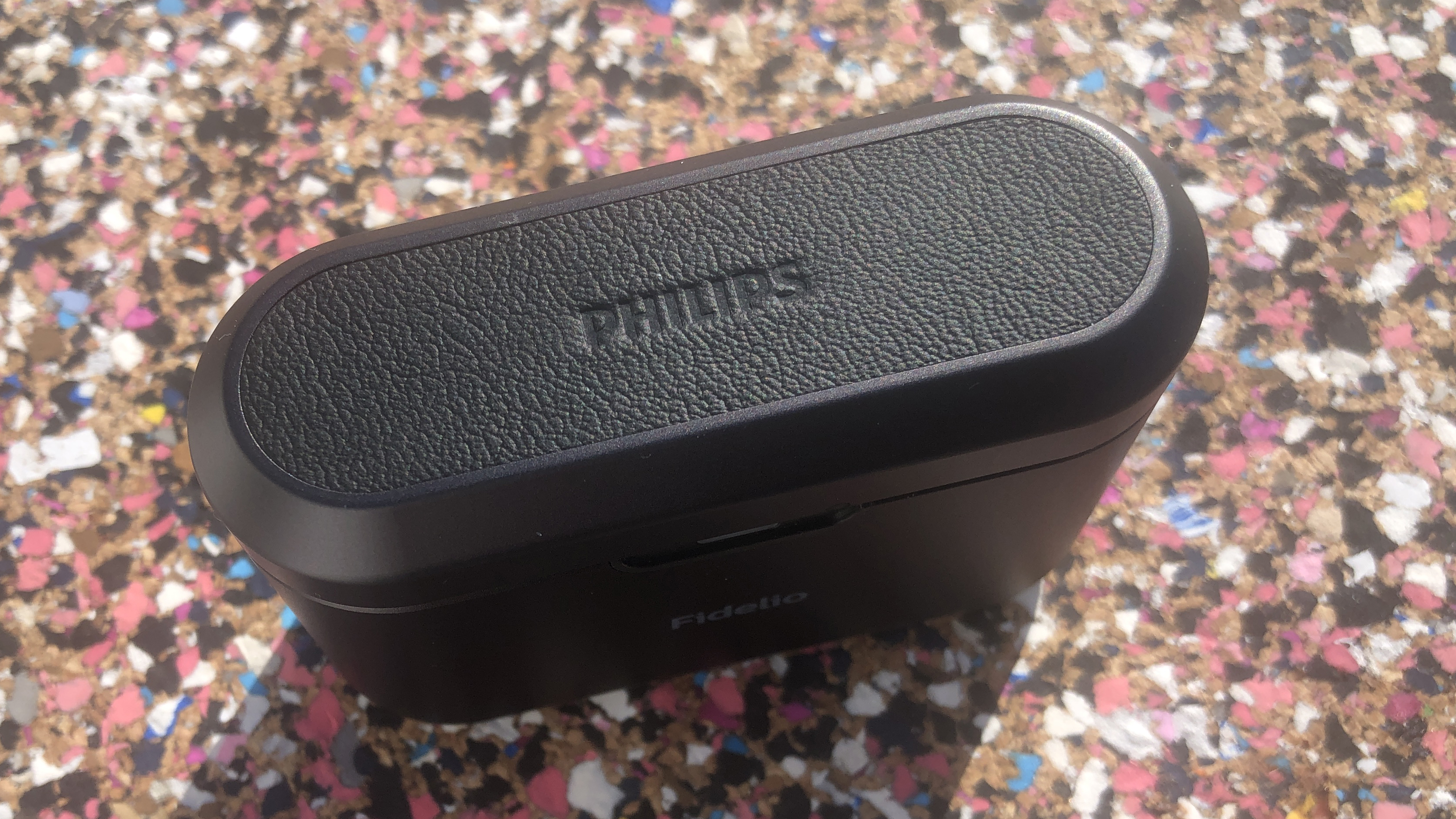
Design
- Almost ostentatiously large earbuds and charging case
- Excellent battery life
- Multiple control options
What’s smaller than the case for a pair of binoculars but bigger than the case for most pairs of true wireless in-ear headphones? The case that holds the Philips Fidelio T1, that’s what. Yes, it both looks and feels great, thanks to a combination of metal and Muirhead leather - but my goodness there’s a lot of it. At 52 x 85 x 32mm , it will defeat any pants pocket, so you’ll need a jacket or a bag in which to stash it while you’re out and about.
Of course, it’s necessarily large because the earbuds that charge in it are on the large side too. They’re lozenge-shaped, and probably most readily comparable to Bose’s excellent (and chunky) QuietComfort Earbuds. But unlike the gawky Bose, the Fidelio T1 mitigate their dimensions (at least a little) by being very pleasantly finished in brushed aluminium. Even the big, round capacitive touch-surface manages to look quite chic.
Philips provides six pairs of eartips, three of which are made from Comply foam - so despite the earbuds’ assertive dimensions, getting them comfortable is no problem whatsoever. If you’re after discretion, though, it’s probably best to look elsewhere.
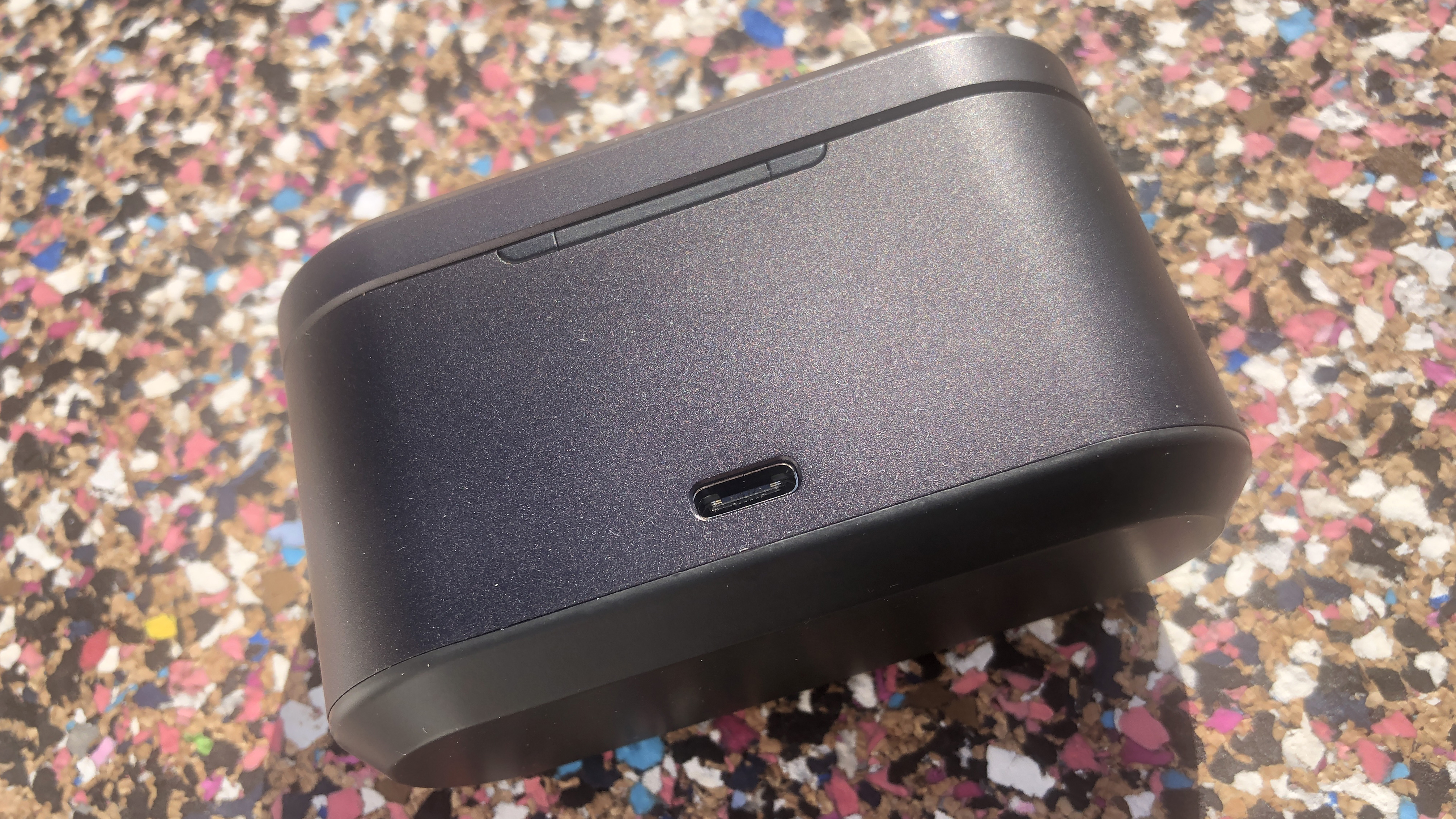
Still, at least these, um, generous proportions translate into decent battery life. Philips claims 34 - 48 hours, depending on active noise cancellation being switched on or off, with nine ANC-on hours in the earbuds and 13 hours if it’s off. These are big numbers by prevailing standards. If you’re careless enough to run out of battery power, 15 minutes charging will get you an hour’s playback - and charging can be done wirelessly as well as via USB-C.
The T1 use Bluetooth 5.2 for wireless connectivity (which doubtless helps those impressive battery-life figures), with compatibility with SBC, AAC and LDAC codecs. They benefit from multipoint connectivity, too. And once your digital audio information is on board, it’s served to your ears by a couple of 10mm full-range dynamic drivers; Philips claimsg a frequency response of (a fairly ambitious) 7Hz - 40kHz.
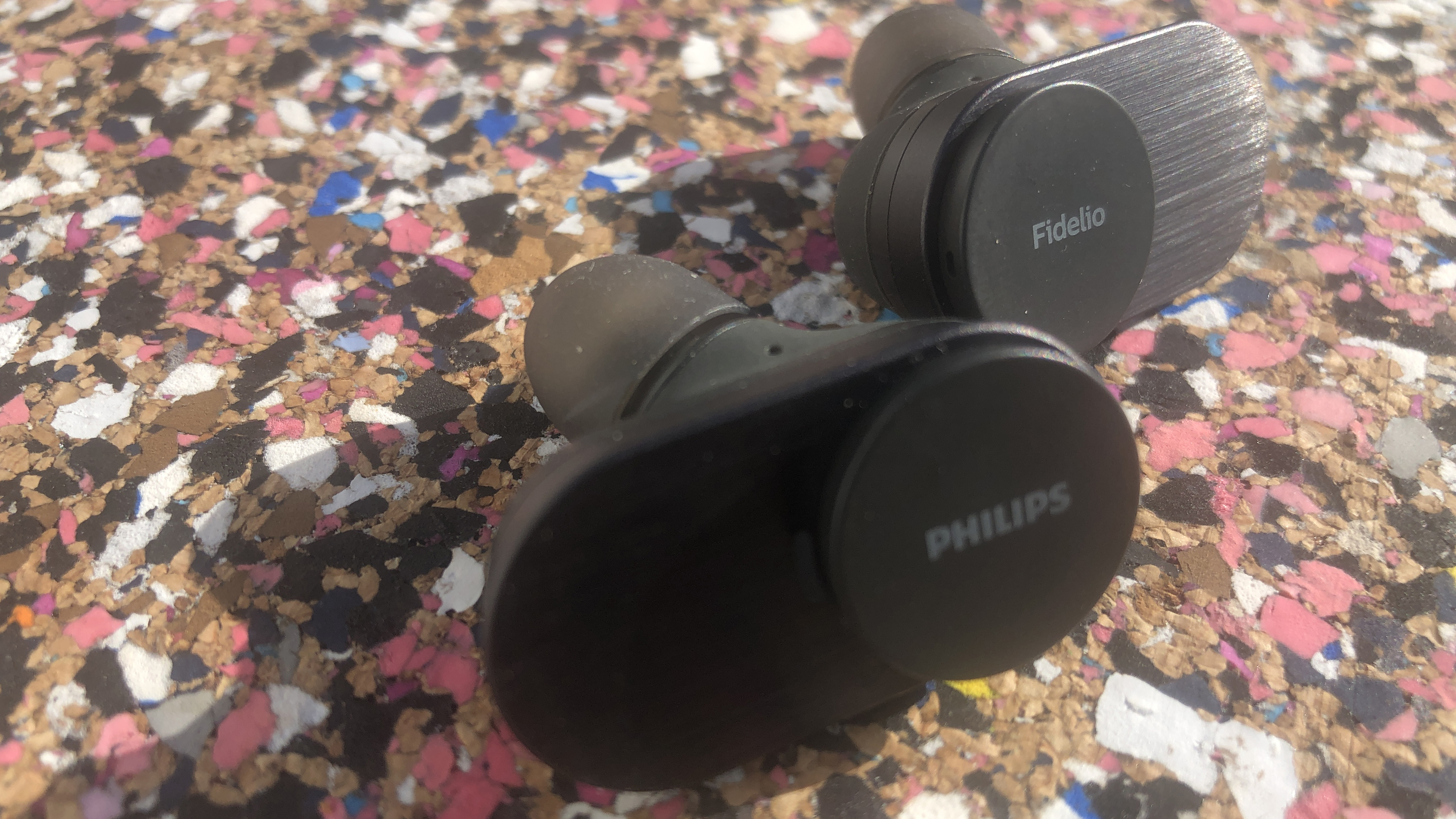
As far as practicalities go, the Fidelio T1 are rated IPX4 for resistance to the usual splashes and/or sweat. They’re controllable via either Google Assistant or Siri - there are three embedded mics bealing with telephony and voice-assistant interaction. Voice-control is reliable, but if you prefer, there are a number of functions available via the touch-surfaces on each earbud - volume control is not among them, though, which is always a weird omission.
There’s also the Philips Headphones app for iOS and Android - here’s where you can switch between the four EQ presets (there’s no option to customize your own, sadly), select ‘adaptive’ noise-cancelling, ‘transparency’ and ‘high’, ‘low’ or ‘wind noise reduction’ under the ‘noise control’ setting. It’s a very agreeable control app as far as apps go, but it just doesn’t go all that far by prevailing standards.
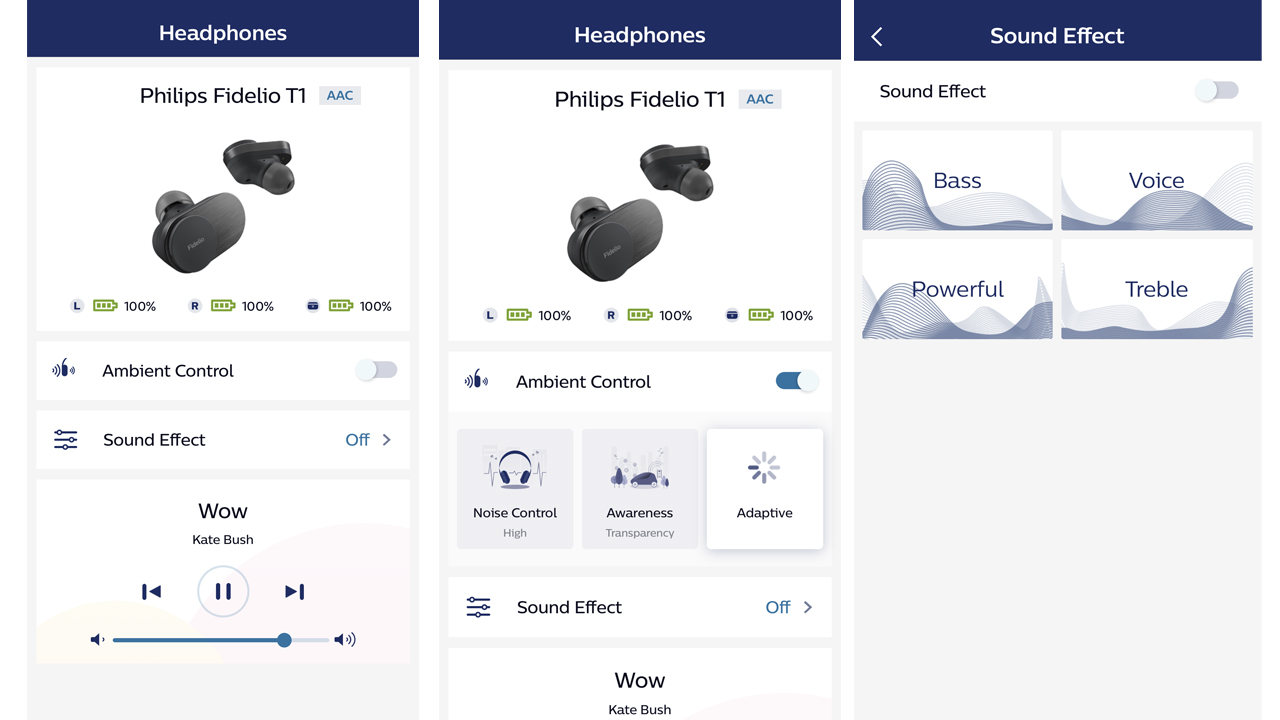
Audio performance
- Punchy, big-boned low frequencies
- Good detail level and fine dynamic response
- Not the last word in top-end extension
Yes, they’re ungainly but the Fidelio T1 aren’t in any way uncomfortable. Once they’re positioned and you’ve got some music playing, it’s quickly apparent they’re an accomplished and adaptable listen. Even better, they stay that way no matter the type or level of noise cancellation you select - tonality doesn’t alter in the slightest, and noise is suppressed with real efficiency.
That tonality is on the warm side of neutral, but there’s none of the mushiness or lack of rigor that can sometimes accompany a toastier sound. The T1 dig plenty deep enough to give Fatima Yamaha’s What’s a Girl To Do? real weight and authority, but with plenty of detail and texture to the low frequencies. Bass sounds are pretty well controlled, too, so they don’t hang around or put the squeeze on the midrange. They’re not the most rapid listen, but neither do the T1 drag at tempos or sound inexpressive with rhythms.

The midrange itself is similarly detailed and similarly convincing. A recording like Bob Dylan’s The Lonesome Death of Hattie Carroll happens almost entirely in the midrange, and the combination of weariness and disgust in his voice is made absolutely apparent. The rudimentary harmonica has just the right level of bite and abrasiveness, too.
The top end enjoys the same sort of assertiveness, and the T1 are attentive enough to identify even the most fleeting transients. Treble sounds are rolled off just slightly, so there’s not quite the bite (or edginess, depending on your preference) some rival designs can deliver - but the overall balance Philips has struck is both pragmatic and enjoyable. The sweep from the top of the frequency range to the bottom is smooth and even, with no area under- or overstated until you reach the very top end.
The T1 let all this happen on a big, properly organized and coherent soundstage. They can make the most of big dynamic variations as well as report on the more subtle harmonic differences that are apparent in solo piano or unaccompanied guitar.
All of this assumes you’ve left the four alternative EQ settings in the control app well alone. Each one (‘bass’, ‘treble’, ‘voice’ and, um, ‘powerful’) serves up a markedly different emphasis, but none is as well-sorted as the default the Philips engineers decided on.
Should I buy the Philips Fidelio T1?
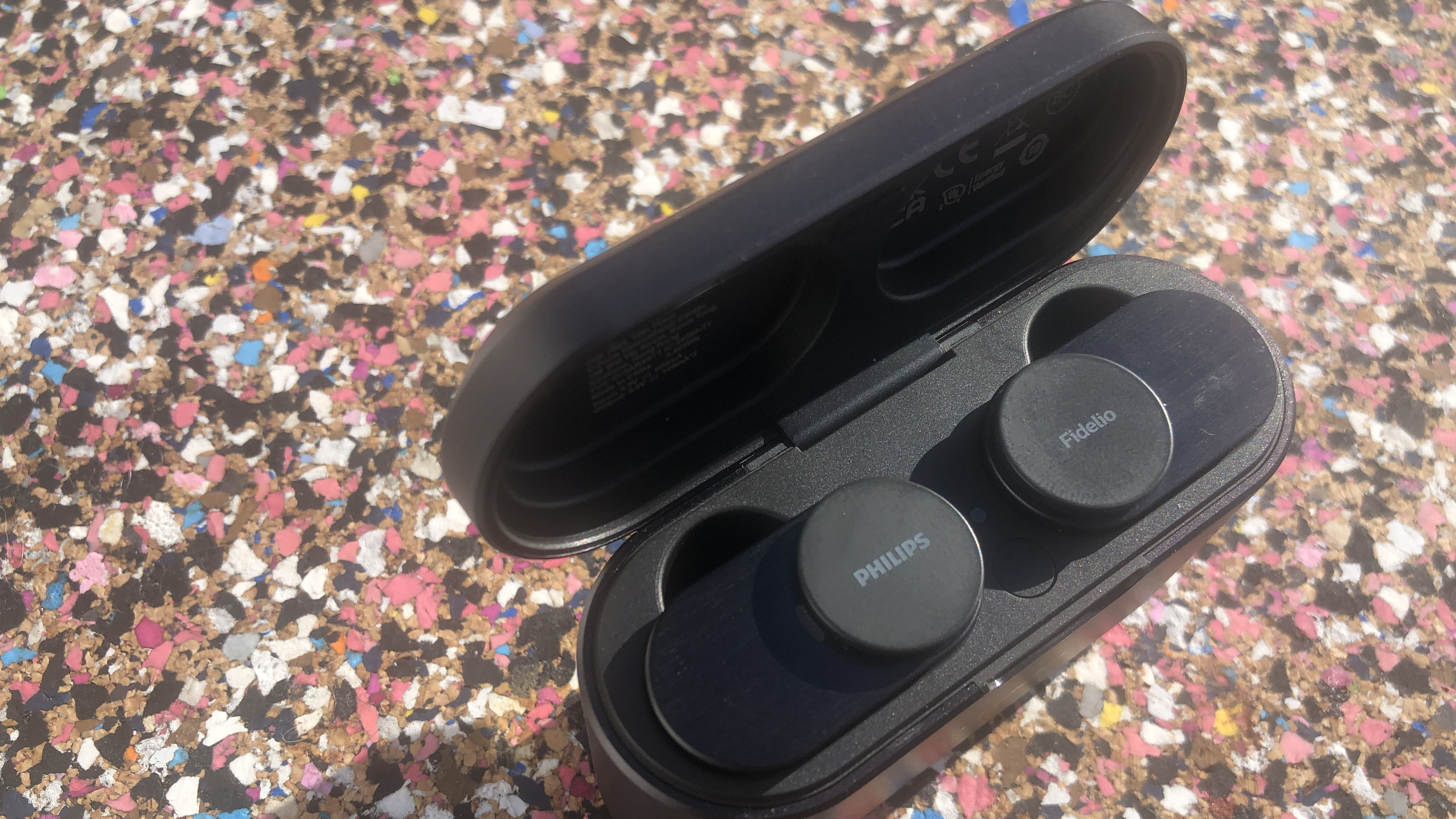
Buy them if...
You like nice things
Brushed aluminum and sustainable leather create a good impression.
You enjoy assertive, full-range sound
The Fidelio T1 dig deep, reach high and hit hard.
You’re always on the go
The epic battery life here will help no end.
Don't buy them if...
You don’t always wear a jacket
Good luck slipping that charging case into a pants pocket.
You don’t like attracting attention
Wear the T1 and there will be looks.
You know what a full-function control app is
Philips has provided a partial-function alternative.
0 comments:
Post a Comment